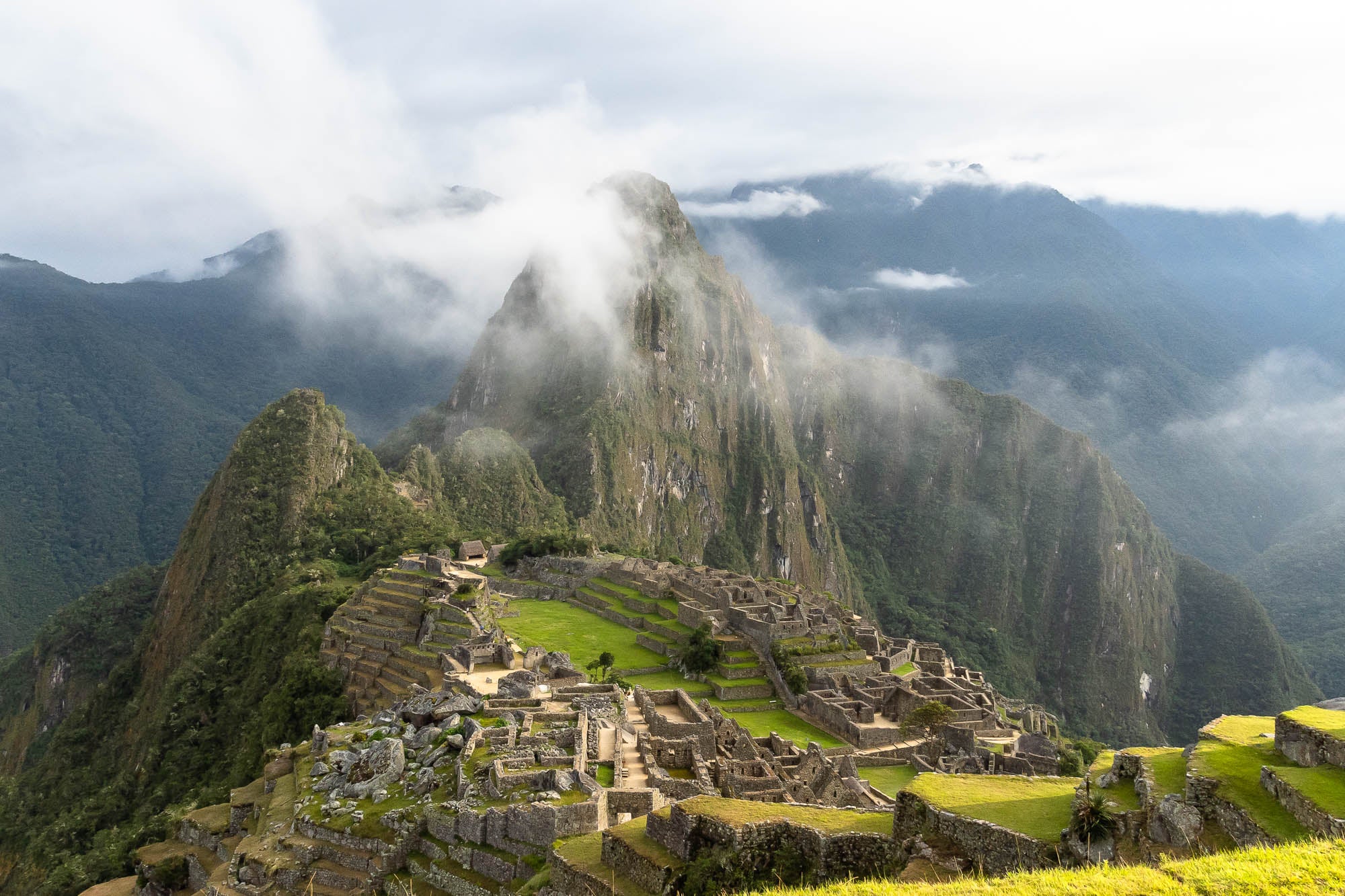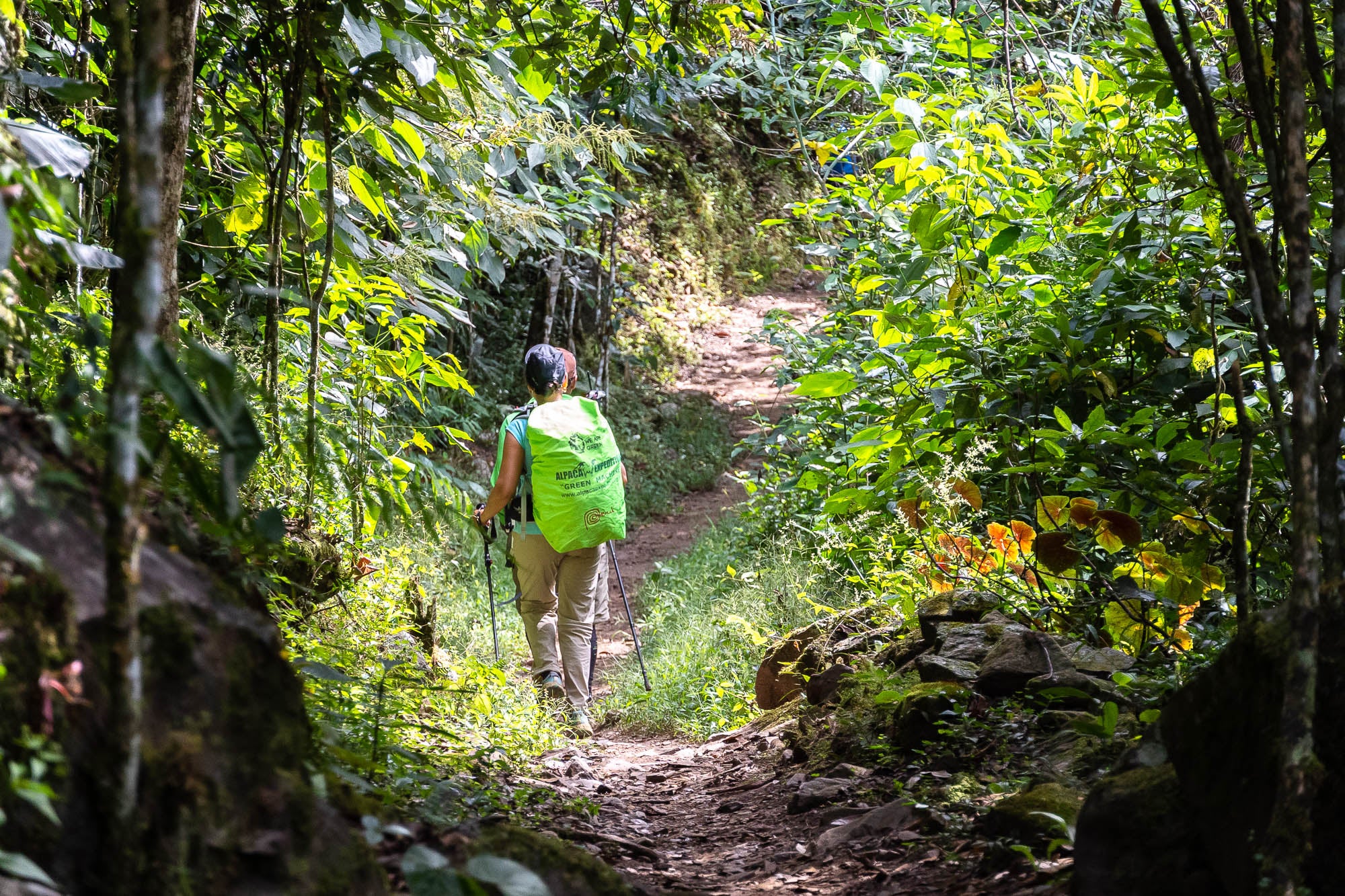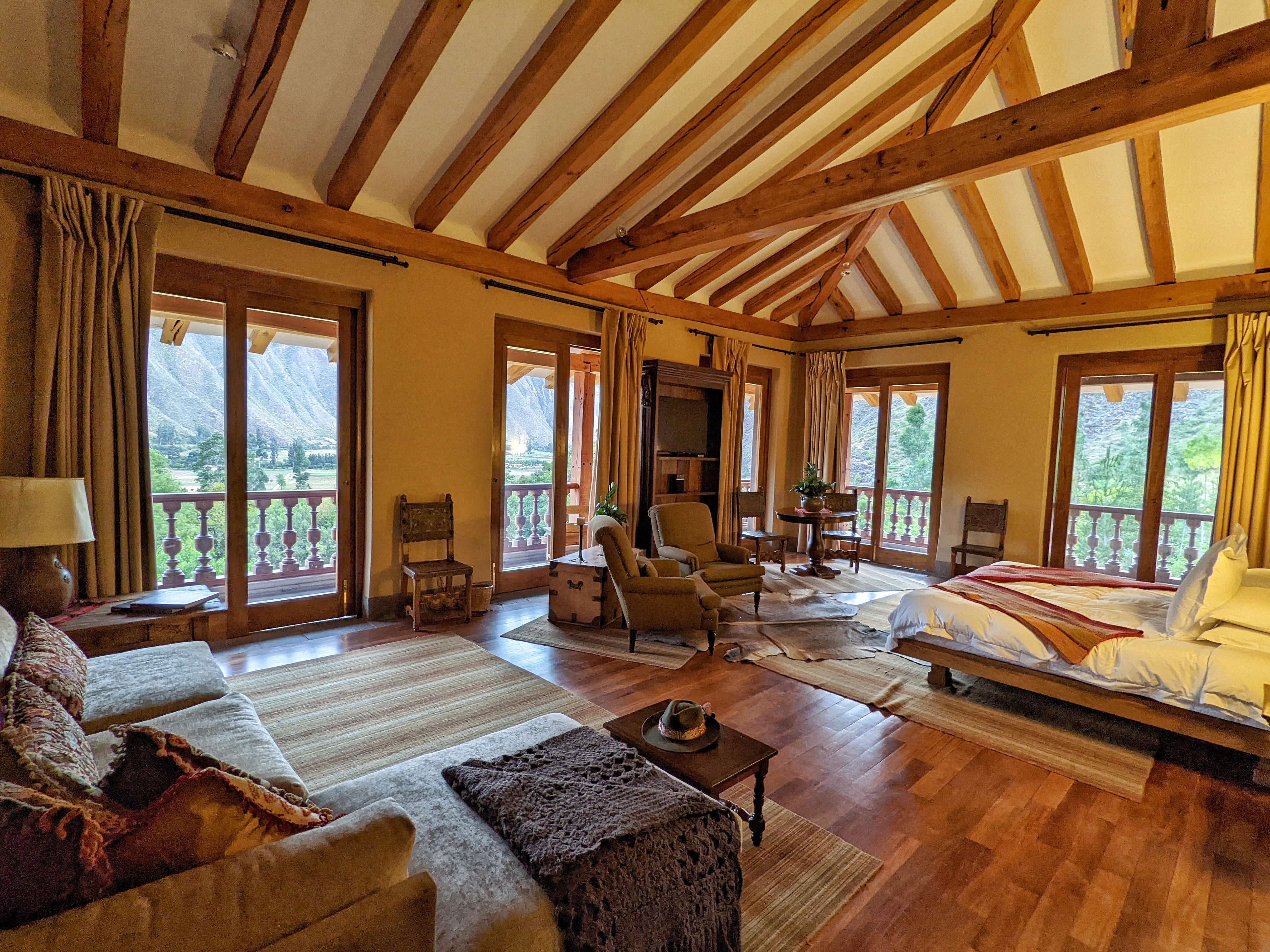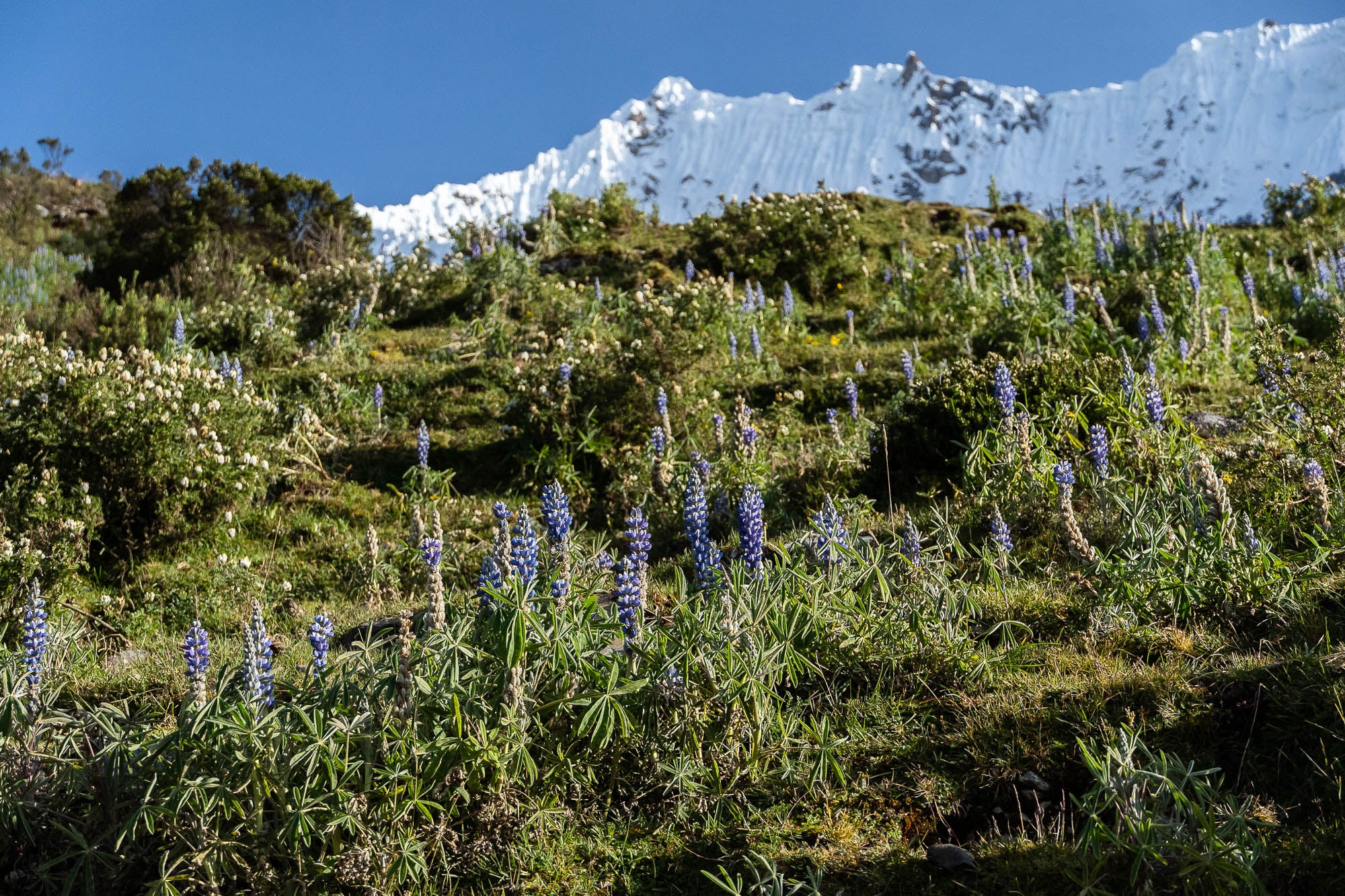How to see Peru’s Machu Picchu the sustainable way
More than a million travellers descend on Peru’s mystical Inca citadel in a typical year. With the impact of overtourism more concerning than ever, how do you minimise your footprint? Steph Dyson reports

“Here in the Andes we believe in reciprocity,” my guide Isao tells me, handing out coca leaves and instructing me to hold the dry stalks together, creating a fan of brittle green from my fingertips. Until this moment, I’ve chewed them and infused them in tea for soroche – altitude sickness. Now at the Salkantay Pass, we’re a heady 4,620 metres above sea level, just 200 metres shy of the summit of Mont Blanc.
To ask for safe passage on this trek, I place the coca leaves on the rocks at my feet. It’s an offering to the gods (known as Apus) who, according to Andean beliefs, inhabit these mountains, including the snow-clothed 6,271-metre Nevado Salkantay, in whose long shadow I stand.
This talk of reciprocity isn’t just a trendy buzzword in this part of the Andes. It’s an integral part of the contract between humans and the environment – something we might instead refer to as “sustainability” elsewhere on the planet – that has existed here for millennia.
I’m trekking the Salkantay Trail, a four-day, 64-kilometre hike that scrambles between lofty Andean mountain passes in the Vilcabamba range, spitting distance from the former capital of the Inca Empire, Cusco. From the pass, the trail plunges into yawning river valleys blanketed with bottle green cloud forest to reach Aguas Calientes, the town beneath the remarkable Inca citadel of Machu Picchu.

Although I spent seven months living in Cusco a few years back, I’d never set foot in Machu Picchu. Instead, I focused on immersing myself in the local scene, reluctant to add my footprints to those of the 25,000 hikers clattering along the Inca trail each year.
This mountaintop city’s battles with tourism and sustainability have been widely publicised. In 2017, Unesco threatened to list Machu Picchu on its heritage sites in danger, while a controversial new international airport proposed in nearby Chinchero is due for completion in 2025, with big implications for overtourism.
Larger than Cusco’s existing airport, it’ll make it possible for flights from as far away as Europe to bypass Lima and Cusco and land directly on Machu Picchu’s doorstep. Critics are concerned about the environmental impact that a dramatically larger influx of visitors could bring.
In 2017, Unesco threatened to list Machu Picchu on its heritage sites in danger, while a controversial new international airport is due for completion in 2025
As a visitor, I’m acutely aware of contributing to the region’s sustainability concerns. Taking a lesser-hiked trail that disperses visitors more widely across the Andes – as well as offering financial opportunities to local farming communities to diversify their income – is one way to minimise this impact.
Unlike the Inca Trail, on the Salkantay path you’ll find no lines of weary walkers or bloated campgrounds. In fact, aside from my trekking group of just eight people, I meet only a couple of other hikers along the entire route. Run by indigenous-owned company Alpaca Expeditions, our tour stops at a local coffee farm and employs guides, porters and chefs from the remote communities that surround the Sacred Valley.

To help acclimatise pre-hike, I’d switched Cusco’s 3,399-metre elevation for the lower altitudes of the Sacred Valley, a fertile strip of land 15km northeast of the city and revered by the Inca people for its bountiful harvests. At Inkaterra Hacienda Urubamba, a sustainable five-star hotel operated by the world’s first climate-positive hotel brand, I learned how they have been supporting sustainability efforts in Machu Picchu.
“First we donated a compacting machine to process the seven tonnes of plastic waste produced daily in Aguas Calientes,” explains general manager Joaquín Escudero. He details how they then built a treatment centre to convert organic waste into biochar, a fertiliser now used to reforest the Andean cloud forest surrounding Machu Picchu. The Inkaterra team has also installed facilities to turn cooking oil into biodiesel – fuel that, it is hoped, will soon power the buses carrying visitors up to the star attraction. All of these initiatives aim to make Machu Picchu the first carbon-neutral wonder of the world.
During my stay in Cusco I made a point of fuelling up at Green Point, a pioneer among the city’s abundance of new vegan restaurants. Here, plant-based takes on lauded dishes such as ceviche (mushroom, rather than fish, “cooked” in lime juice) allow you to savour Peruvian cuisine with less of an impact on the environment.
Taking a lesser-hiked trail that disperses visitors more widely across the Andes – as well as offering opportunities to locals – is one way to minimise your impact
Back on the trail, the scenery is transformed as we drop down from Santalkay Pass. Home to 84 of the world’s 103 ecosystems, Peru is one of the planet’s most biodiverse countries. From the scree of a now-retreated glacier, where powder-blue butterflies flit between periwinkle lupins, I step into the thick foliage of the Andean cloud forest.
Delicate orchids and rust-coloured bromeliads cling leech-like to trees, while it’s impossible to coax passing hummingbirds into photographs. I don’t see any, but Isao assures me that Andean spectacled bears – of which Michael Bond’s creation, Paddington, is the most famous – are here, too.
Travelling with Alpaca Expeditions, it’s easy to feel good about your interactions with locals. A pioneer in social sustainability, the operator has worked on several socio-economic issues around tourism here. Its biggest mission has been to address the fact that the porters carrying tourists’ bags on the trails don’t typically enter Machu Picchu.

As such, many porters hike the Inca trail over 200 times and still never see the world-famous city. Alpaca Expeditions has now paid for over 500 staff members and their families to finally visit Machu Picchu and experience a vital part of their cultural history. It also organises litter clean-ups along the path, as well as being one of the first operators to hire female guides and porters on its tours.
As we move closer to our destination, I am so thankful I opted for this company and this trail. Tackling remote mountain passes and happening upon rural villages feels more akin to the once-sacred pilgrimage to Machu Picchu so revered by the Inca than the typical tourist excursion.
Three days later, I stand at the much-photographed viewpoint over Machu Picchu, its flattened crop terraces and expertly-assembled dry-stone masonry appearing as square and logical as a 15th-century version of Tetris.
I can see the beginnings of crowds exploring the once silent streets of the magical citadel, but it feels like a fair price to pay – after all, we’ve avoided them for four glorious days of trekking through scenery so overwhelmingly vast and wild. The Salkantay Pass and my offering to the gods feels a long time ago, but I’m left with the feeling that travelling sustainably – with reciprocity in mind – is something we all owe to the Andean ancestors.
Travel essentials
Getting there
Direct flights to Lima from London were shelved during the pandemic and have not returned – the most direct route is currently via Bogotá, Colombia with Avianca, or Madrid with Iberia and LATAM. Once in Lima, it’s a 1 hour 45 minute domestic flight or 24-hour bus onward to Cusco – if you’re going overland, break up the journey by taking your time and making a few other stops along the way.
More information
The guided Salkantay trek can be booked through Alpaca Expeditions from March to early January, costing from £520pp for five days, including all meals, plus transport by bus to the trailhead and by train from Aguas Calientes back to Cusco.
Join our commenting forum
Join thought-provoking conversations, follow other Independent readers and see their replies
Comments
Bookmark popover
Removed from bookmarks